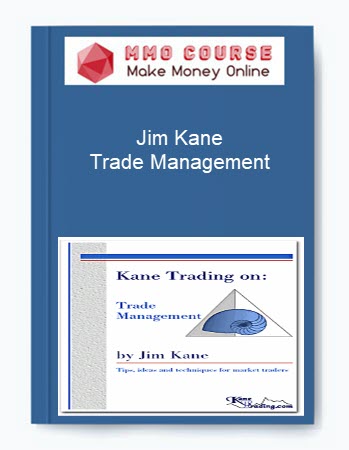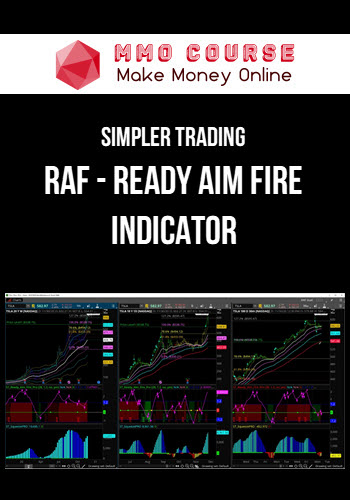Jim Kane – Trade Management
$70.00 $23.00
GB Status: This product will available in 7 days later after you pay
Salepage: https://www.kanetrading.com/books/books.html
Description
Jim Kane – Trade Management
Trade Management is designed to help satisfy Critical Elements number three and four of the ‘Plan for a Trade’, trade size and trade management. This book is very comprehensive, extending to aspects outside of the ‘Plan for a Trade’ (also called ‘The Critical Elements of a Trade’), and includes many aspects that fit into the master ‘Trading Plan’.
Topics include discussion on percentage of capital risked per trade, maximum percentage of total capital per trade, reward/risk, winning percentages, expected value, correlation risk in trades, calculating trade size, management aspects of different trading vehicles, protective stop losses and variations on setting them, initial movement of stop losses, moving of stop losses as a trade progresses, the ‘other side’ to commonly taught management plans, and management of advanced winning trades (including detailed discussion on scaled exits).
This book covers a large group of management topics, covering areas from before the trade starts until after the trade is closed. By comparison, Trailing Stops specifically covers one aspect of trade management, using one broad concept (although it has many unrelated variations within that one concept), and that is trailing a stop on a winning trend trade.
That book is not designed to be a comprehensive guide to trade management; it is designed to be a comprehensive guide to Trailing Stops. Trade Management will not cover the trailing stops concept in the detail that the book Trailing Stops does. These two books are designed to complement each other. Of all the topics in Trade Management, I felt that trailing stops required its own book, so the level of detail needed on that topic could be put forth.
Trade Management does, however, introduce the latest, most favored trailing stop/scaled exits technique developed and used at Kane Trading. The presentation of this new technique in Trade Management is the first time that this method has been presented anywhere.
Book Level: Intermediate to advanced. This book is also advised for beginners, too, so they can be exposed to these concepts right from the start. If your level is beginner, though, understand that many of the concepts may be difficult to fully grasp until you gain a higher degree of expertise and experience.
Prerequisites: Although none are specifically required, to get the most out of Trade Management it is strongly suggested that the reader be familiar with the material in the following books: Advanced Fibonacci Trading Concepts, Entry Techniques, Trading ABCD Patterns, Trailing Stops, and Multiple Timeframes and ‘Context’.
The reader should also be versed in 5-point and ABCD pattern structure and labeling, as well as in the application and trading of these patterns, but again, this is not a necessity. The book was written so that the material could be adapted to any style and any ‘Trading Plan’.
Sale Page: Jim Kane – Trade Management
Find out more Trading Stock – Forex Courses
Delivery Policy
When will I receive my course?
You will receive a link to download your course immediately or within 1 to 21 days. It depends on the product you buy, so please read the short description of the product carefully before making a purchase.
How is my course delivered?
We share courses through Google Drive, so once your order is complete, you'll receive an invitation to view the course in your email.
To avoid any delay in delivery, please provide a Google mail and enter your email address correctly in the Checkout Page.
In case you submit a wrong email address, please contact us to resend the course to the correct email.
How do I check status of my order?
Please log in to MMOCourse account then go to Order Page. You will find all your orders includes number, date, status and total price.
If the status is Processing: Your course is being uploaded. Please be patient and wait for us to complete your order. If your order has multiple courses and one of them has not been updated with the download link, the status of the order is also Processing.
If the status is Completed: Your course is ready for immediate download. Click "VIEW" to view details and download the course.
Where can I find my course?
Once your order is complete, a link to download the course will automatically be sent to your email.
You can also get the download link by logging into your mmocourse.hk account then going to Downloads Page.
Related products
Total sold: 5
Total sold: 8
Total sold: 2
Total sold: 10
Total sold: 5







![Simpler Trading – 10X Trade Formula Options [Complete + Indicator]](https://mmocourse.org/wp-content/uploads/2023/02/Simpler-Trading-–-10X-Trade-Formula-Options-Complete-Indicator.jpg)


